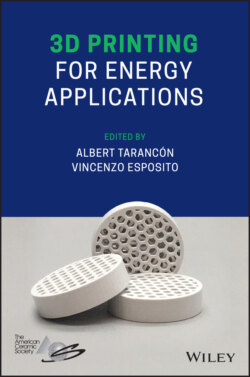Читать книгу 3D Printing for Energy Applications - Группа авторов - Страница 20
1.1.1 Industrial Application of Metal AM in the Energy Sector
ОглавлениеIndustrial applications of functional metal AM components can be found across various sectors including nuclear power, oil & gas, turbine components, wind & tidal energy, fuel cell components, and electromagnetic energy to name a few. Some such applications are discussed in this subsection. The GE Leap fuel nozzle was one of the first certified metal AM components to undergo high‐critical testing and deployment into production [7]. Siemens has been at the forefront of metal AM applications with replacement parts for nuclear plants, sealing rings for steam turbine blades and high‐efficiency gas turbine burners [8]. Oerlikon has showcased topology optimized turbine blades and drill bits for oil & gas applications with integrated sensors [9]. Biome renewables has designed and retrofitted an AM part to increase efficiency of existing wind and tidal turbine installations [10]. Aidro has manufactured high‐pressure hydraulic manifolds and heat exchangers for oil & gas applications [11]. The Oakridge National Lab (ORNL) has demonstrated a newly designed nuclear reactor core with multi‐material and integrated sensor functionality planned in the near future [12]. Optisys manufactures high‐performance antennas for critical electromagnetic energy sensor applications for satellites [13]. Thermal management applications—like heat exchangers, fuel cell components, and rocket nozzles—greatly benefit from the design freedom offered by metal AM [14]. The diversity of potential applications for metal AM in the energy sector is just starting to be explored. A better understanding of the potential can be gained by reviewing recent advances in functional metal AM components by classifying the functionality according to geometric and material gradients.
